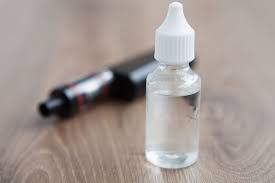The global demand for Propylene Glycol was valued at USD 4.13 Billion in 2023 and is expected to reach USD 6.9 Billion in 2032, growing at a CAGR of 6.2% between 2023 and 2032. Propylene glycol (PG), a versatile organic compound, has become a staple in various industries due to its wide-ranging applications. As a synthetic liquid substance, it is absorbed well by the body and has been deemed safe for use in foods, pharmaceuticals, and cosmetics. The global propylene glycol market has witnessed significant growth over recent years, driven by rising demand across various sectors such as automotive, construction, food and beverage, pharmaceuticals, and personal care products.
Browse the full report at https://www.credenceresearch.com/report/propylene-glycol-market
Market Overview
The propylene glycol market was valued at approximately USD 4 billion in 2023 and is projected to grow at a CAGR of around 5% from 2024 to 2030. This growth can be attributed to several factors, including the increasing use of PG in the production of unsaturated polyester resins (UPR), which are essential in manufacturing construction materials and automotive components.
Key Drivers
1. Rising Demand in the Automotive Sector: Propylene glycol is extensively used as an antifreeze and coolant in the automotive industry. With the global increase in vehicle production and the need for better performance and safety features, the demand for high-quality antifreeze solutions has surged. PG’s low toxicity and high boiling point make it an ideal choice for such applications.
2. Growth in the Food and Beverage Industry: PG is a common additive in food products, where it acts as a humectant, solvent, and preservative. The rising demand for processed and packaged foods, driven by changing consumer lifestyles and increasing urbanization, has bolstered the market for propylene glycol. Additionally, its approval by major regulatory bodies, including the FDA and EFSA, supports its widespread use in the food industry.
3. Expanding Pharmaceutical and Personal Care Sectors: In pharmaceuticals, PG is used as a solvent in oral, injectable, and topical medications. Its role in the formulation of creams, lotions, and other personal care products is also notable. The growing awareness of personal health and hygiene, along with advancements in pharmaceutical formulations, has further propelled the demand for propylene glycol.
4. Advancements in Bio-based Propylene Glycol: Environmental concerns and the push for sustainability have led to the development of bio-based propylene glycol, derived from renewable resources such as corn and soy. This eco-friendly variant is gaining traction, particularly in regions with stringent environmental regulations. The shift towards greener alternatives is expected to drive the market forward.
Regional Insights
The propylene glycol market exhibits significant regional variations, with Asia-Pacific leading the charge. This region’s dominance can be attributed to rapid industrialization, urbanization, and economic growth, particularly in countries like China and India. The burgeoning automotive and construction sectors in these nations have spurred the demand for PG.
North America and Europe also hold substantial market shares, driven by the presence of established automotive, pharmaceutical, and food and beverage industries. Furthermore, stringent regulations regarding the use of safe and environmentally friendly chemicals have promoted the adoption of bio-based propylene glycol in these regions.
Challenges and Restraints
Despite its numerous advantages, the propylene glycol market faces several challenges. Fluctuating raw material prices, particularly propylene oxide, a key precursor in PG production, can impact market dynamics. Additionally, concerns regarding the environmental impact of conventional PG production processes have led to increased regulatory scrutiny.
Future Outlook
The future of the propylene glycol market looks promising, with continued growth expected across various industries. Technological advancements and ongoing research into alternative production methods, such as bio-based PG, are likely to open new avenues for market expansion. Moreover, the increasing focus on sustainability and eco-friendly products will drive the demand for bio-based propylene glycol.
Top Key Players
- Shell Plc
- INEOS Oxide
- Huntsman International L.L.C
- ADEKA CORPORATION
- Chaoyang Chemicals, Inc.
- Temix Oleo
- Midland Company
- Helm AG
- Manali Petrochemicals Limited
- Haike Chemical Group Co., Ltd.
- Dow
- Arch Chemicals Inc
- Repsol
- LyondellBasell Industries N.V.
- BASF SE
- ADM
- Global Bio-chem Technology Group Company Limited
- DuPont Tate and Lyle Bio Products
- SKC
Segmentations:
By Source :
- Bio-Based
- Petroleum
By Type :
- Food Grade
- Pharma Grade
- Industrial Grade Propylene Glycol
By End Use :
- Cosmetic and Personal Care Products
- Consumer Goods (Liquid Detergents)
- Chemical Intermediary (Unsaturated Polyester Resins, Functional Fluids & Antifreezes)
- Food
- Pharmaceuticals
By Primary Function :
- Propylene Glycol as Preservative Agents
- Propylene Glycol as Humectants (Binding Agent)
- Propylene Glycol as Emollients (Softener)
- Propylene Glycol as Solvents
- Propylene Glycol as Stabilizing Agents
- Propylene Glycol as Excipients (Bulking Agent)
- Others
Browse the full report at https://www.credenceresearch.com/report/propylene-glycol-market
About Us:
Credence Research is committed to employee well-being and productivity. Following the COVID-19 pandemic, we have implemented a permanent work-from-home policy for all employees.
Contact:
Credence Research
Please contact us at +91 6232 49 3207
Email: sales@credenceresearch.com
Website: www.credenceresearch.com

Leave a Reply
You must be logged in to post a comment.